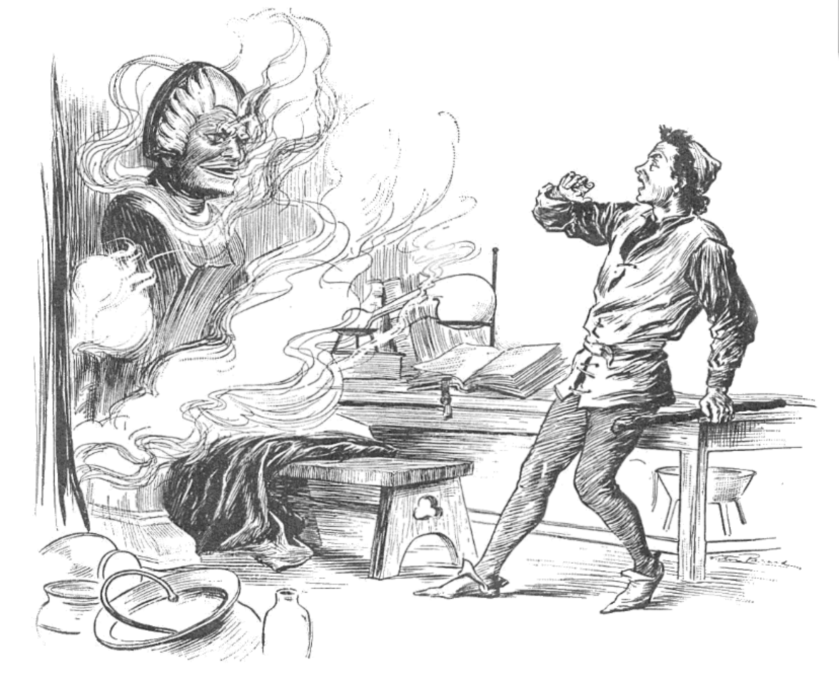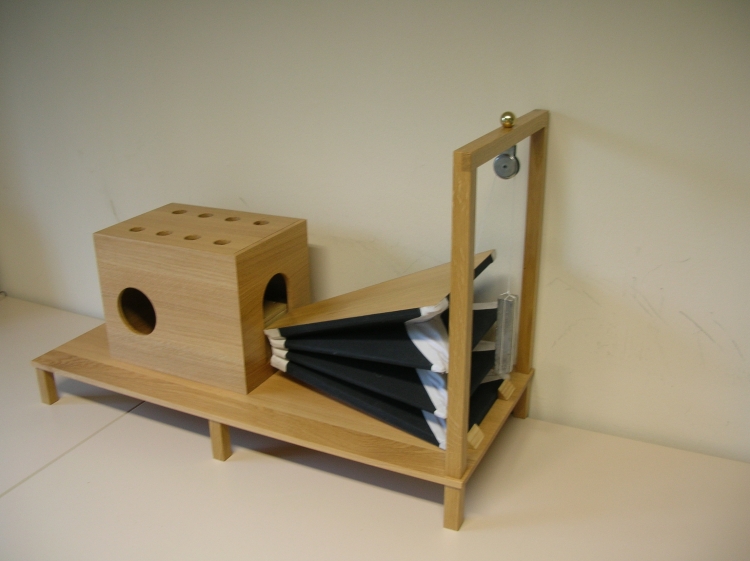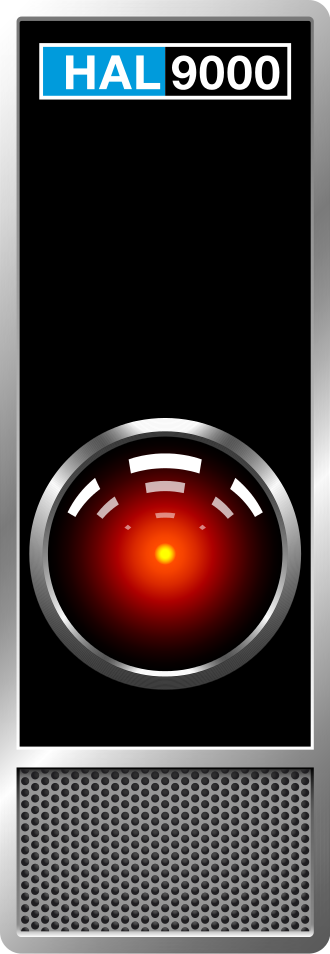We live in an age when pocket sized devices are capable of producing text from speech, and speech from text. We’ve all tried with varying degrees of success, to dictate a text message or email. It may come as a surprise as it did to me, how long the idea of other-than-human speech has been around.
According to Norse mythology, Mímir was the wisest of the Gods of Æsir. Mímir or Mim was beheaded during the war with the rival Gods of Vanir after which Odin carried the thing around (the head), so that it may impart secret knowledge and wise counsel.
The Brazen Head of the early modern age was the legendary automaton of medieval wizards and necromancers and always said to give the correct answer, provided the question was…just right. William of Malmsbury’s History of the English Kings (c. 1125) contains the earliest known reference to such a talking, Brazen Head. Similar legends followed the polymath Pope Silvester II (c. 946 – 1003), the Dominican friar Albertus Magnus (c.1200 – 1280) and the English philosopher Roger Bacon (1214 – 1294).

In 1779, the German-Danish scientist Christian Gottlieb Kratzenstein built a model of the human vocal tract which could produce the five long vowel sounds of the international phonetic alphabet.
Wolfgang von Kempelen of Pressburg, Hungary, described a bellows-operated apparatus in a 1791 paper, including facsimiles of tongue and lips to produce the nasals, plosives and fricatives required to mimic most (but not all) consonant sounds. Charles Wheatstone actually built the thing in 1846 after Kempelen died, calling his acoustic-mechanical speech machine, the ‘euphonia’.

At Bell Labs in the 1930s, the pioneering work of acoustic engineer Homer Dudley led to the Vocoder, a portmanteau of voice and encoder, capable of synthesizing and encrypting voice transmissions for use in secure radio communications. The receiving apparatus or Voder, a keyboard operated device capable of independent speech synthesis, was demonstrated at the 1939 World’s Fair.
In the late 1940s, the pattern playback machines of Dr. Franklin S. Cooper and the Haskins Laboratories converted pictures of acoustic speech patterns, into recognizable speech. In 1961, physicist John Larry Kelly, Jr. and Louis Gerstman produced the first truly synthesized speech using an IBM 7094 computer. Kelly’s synthesizer recreated the song “Daisy Bell” with musical accompaniment from Max Vernon Matthews, a song made popular in 1892 and better known as “A Bicycle Built for Two.”
“Daisy, Daisy / Give me your answer, do. / I’m half crazy / all for the love of you…”

By sheer coincidence, the English futurist, science-fiction writer and television host Arthur Charles Clarke was visiting his friend and colleague John Pierce at this time, at Bell Labs’ Murray Hill facility.
If you think that name sounds familiar, you’re right. Today, Clarke joins American writers Isaac Asimov and Robert Heinlein as the “Big three”, in science fiction.
It is Clarke who wrote the script for Stanley Kubrick’s 1968 dystopic 2001: A Space Odyssey.
Clarke was so impressed with the Daisy Bell demonstration he wrote it into his screenplay. You may remember the climactic scenes of the film as fictional astronauts Frank Poole and Dave Bowman battle for their lives against Discovery’s supercomputer-gone-bad, the HAL9000, “born” this day in 1992 at the HAL Labs in Urbana Illinois, according to the screenplay.
After HAL hurled Frank Poole off into the black void of space and shut off life support to the rest of the crew while still in suspended animation, Dave Bowman is now the sole survivor of the Discovery mission, desperately seeking to unhook the power modules, to the HAL9000.
“I’m afraid I can’t let you do that, Dave”.
In the end, the servant of mankind-turned-evil supercomputer reverted to his most basic programming:
“It won’t be a stylish marriage / I can’t afford a carriage.”
“But you’ll look sweet/on the seat/of a bicycle built, for two.”
Fun fact: English songwriter and composer Harry Dacre first came to the United States, with a bicycle. Complaining about having to pay duty on the thing, Dacre’s American friend and fellow songwriter William Jerome quipped, “It’s lucky you didn’t bring a bicycle built for two, otherwise you’d have to pay double duty.” Dacre was so taken with the phrase he soon used it in a song, first popularized in a London music hall and first performed in the United States, in 1892. “Daisy Bell”.



Thanks Rick…I had no idea this technology went back that far.
LikeLiked by 3 people
I always loved that final drama with the HAL9000 but I was tickled to learn the “Daisy Bell“ connection, with the earlier experiments.
LikeLiked by 2 people
You have me wanting to see that movie again…which I will do.
It still amazes me that had computers like they had back then.
LikeLiked by 2 people
Arthur Clarke worked on radar guidance to help often wounded or unqualified bomber pilots land in the dark after bombing German targets. Czech mathematician and EE Petr Beckmann (of Access to Energy) also worked on that project. Clarke’s “Glide Path,” a novelized look at the technique, is a good read.
LikeLiked by 2 people
Thank you. I’d like to check that out.
LikeLiked by 1 person
I cut a few seconds of soundtrack and saved as a WAV file in the Windows media folder. When I turn the machine off, comes the laconic plaint: “Stop… Dave… my mind is going… I can feel it…” Hal’s “just a moment” is also a good OS message.
LikeLiked by 2 people
I always loved that story. HAL was such a great character. The ultimate bad guy .
LikeLiked by 1 person
Reblogged this on Dave Loves History.
LikeLiked by 2 people
I wondered if that was you, but naah. You’re a submarine guy.
LikeLiked by 1 person
You never see us coming!
LikeLiked by 1 person
😀
LikeLike